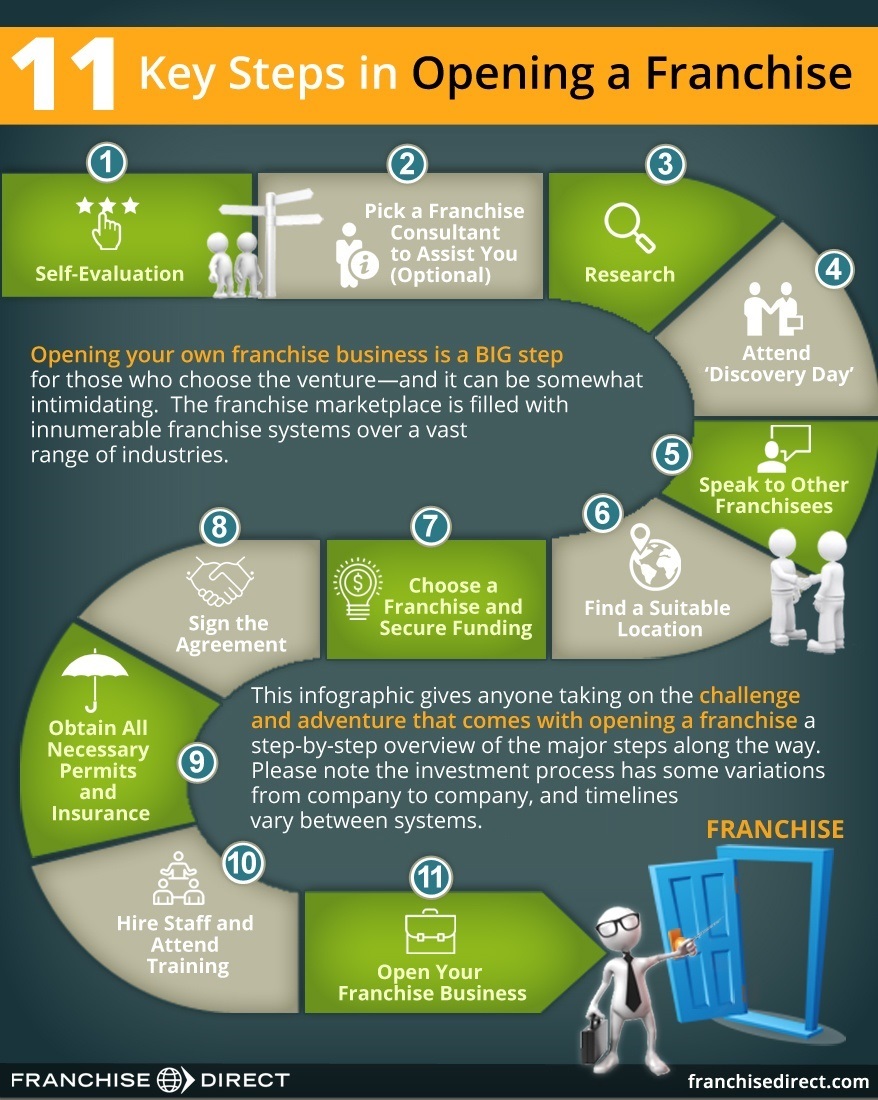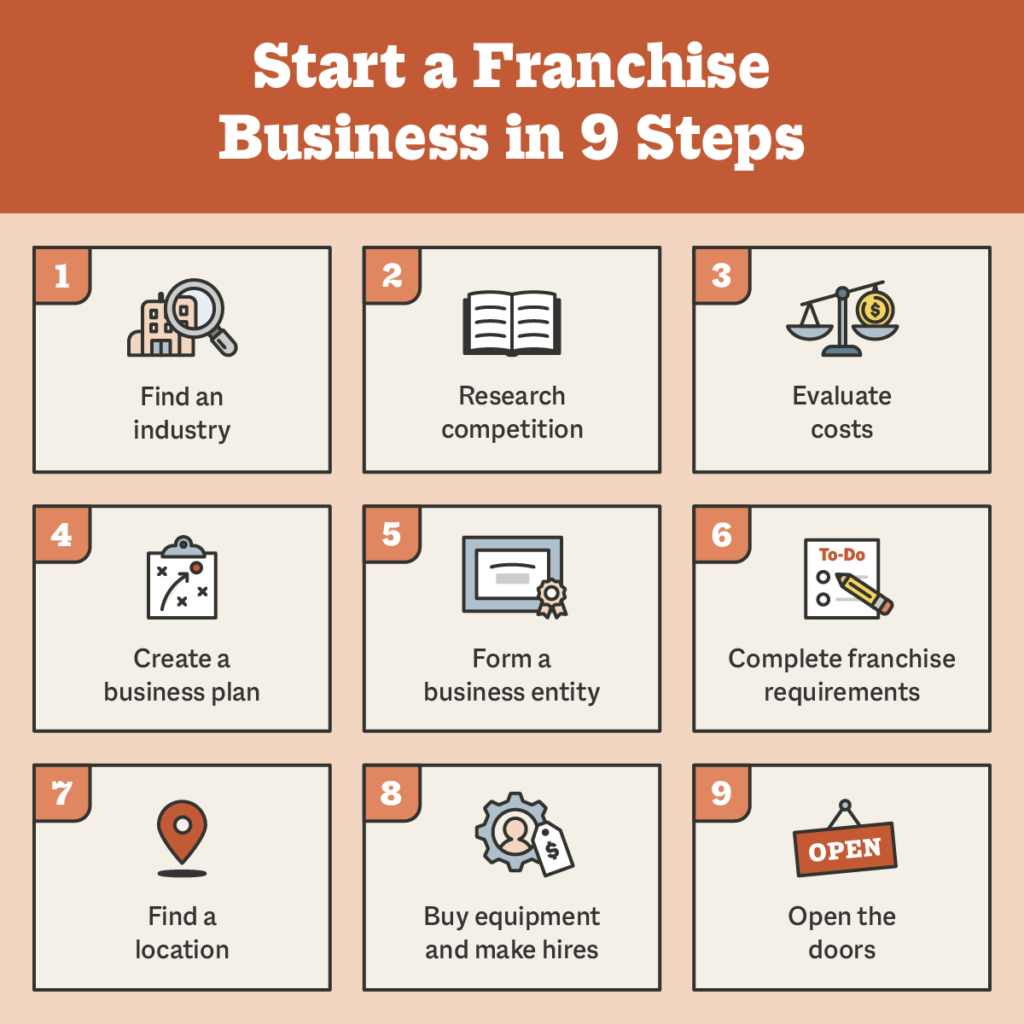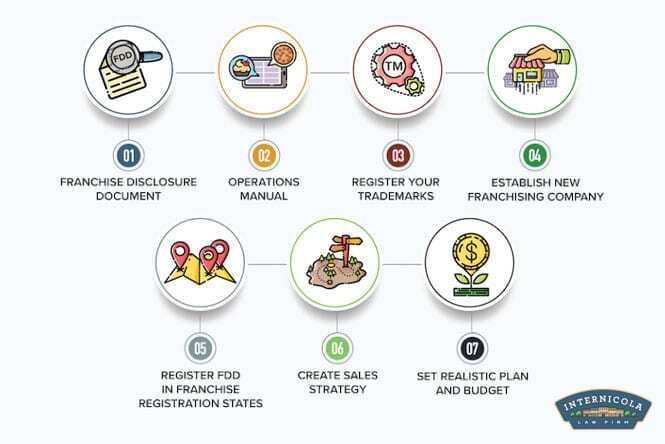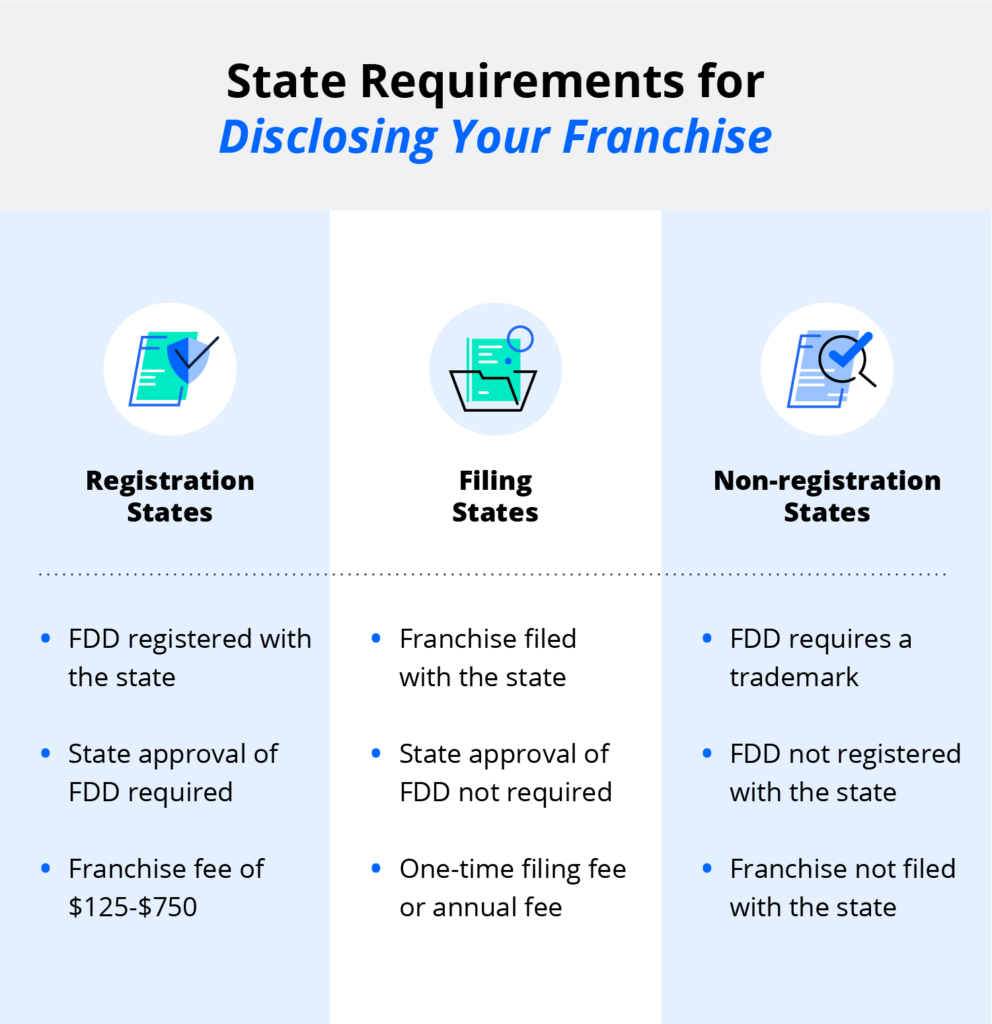If you’re an existing restaurant owner looking to expand your business, franchising your restaurant may be a viable option for you. As a franchisor, you have the opportunity to grow your brand and reach a wider audience. However, starting a franchise restaurant requires careful planning and execution. In this article, we will guide you through the essential steps involved in becoming a successful franchisor, from conducting market research to establishing a solid franchise business model. So, if you’re ready to take your restaurant to the next level, let’s dive into the world of franchising!

This image is property of static.franchisedirect.ie.
Choosing the Right Franchise Model
Researching Different Franchise Models
When it comes to starting a franchise restaurant, choosing the right franchise model is crucial. Before making a decision, it’s important to research and evaluate different franchise models available in the market. Look into various restaurant concepts, cuisines, and target markets that align with your own restaurant’s vision and values. Consider factors such as brand reputation, market demand, and growth potential of each franchise model.
Evaluating the Pros and Cons of Each Model
Once you have identified potential franchise models, it’s essential to thoroughly evaluate the pros and cons of each one. Look into the support and training provided by the franchisor, as well as the costs and fees associated with the franchise. Consider the level of control you will have over your own restaurant’s operations and menu, and compare it to the level of brand recognition and customer base that comes with each franchise model. This evaluation will help you make an informed decision about which franchise model best suits your goals and vision.
Selecting a Model That Aligns with Your Restaurant’s Concept
After researching and evaluating different franchise models, it’s time to select a model that aligns with your restaurant’s concept. Consider factors such as menu offerings, target market, and overall brand positioning. Ensure that the franchise model promotes and enhances your restaurant’s unique selling points and strengths. By selecting a model that aligns with your restaurant’s concept, you can ensure a seamless integration of the franchise into your existing operations and a better chance of success in the market.
Conducting Market Research
Identifying Target Market and Potential Customers
Before launching a franchise restaurant, it’s crucial to identify and deeply understand your target market and potential customers. Conduct market research to gather data about the demographics, preferences, and needs of your target audience. Understand their dining habits, the types of cuisine they prefer, and their willingness to spend on dining experiences. This valuable information will help you sharpen your restaurant concept and tailor your offerings to attract and retain your desired customer base.
Analyzing Competitors and Market Trends
In addition to understanding your target market, it’s important to analyze your competitors and stay up-to-date with market trends. Identify existing restaurants and franchises that cater to your target market and study their strengths, weaknesses, and unique selling points. This analysis will help you differentiate your franchise restaurant and develop strategies to stand out from the competition. Additionally, stay informed about the latest culinary trends, consumer preferences, and industry developments to ensure your restaurant stays relevant and appealing to customers.
Assessing the Viability of Your Restaurant Concept in the Market
Once you have conducted market research and analyzed competitors and market trends, it’s essential to assess the viability of your restaurant concept in the market. Consider factors such as market saturation, demand for your cuisine, and potential challenges you may face. Be realistic about your restaurant’s potential success and make any necessary adjustments to your concept to ensure it meets the demands and expectations of the market. This assessment will help you make informed decisions and set realistic goals for your franchise restaurant.

This image is property of www.posist.com.
Developing a Solid Business Plan
Determining Startup Costs and Initial Investment
As with any business venture, starting a franchise restaurant requires a solid business plan. One crucial component of this plan is determining the startup costs and initial investment required for your restaurant. Consider expenses such as franchise fees, lease or rental costs, equipment purchases, initial inventory, and marketing costs. By accurately estimating these costs, you can ensure that you have sufficient funds to cover them and avoid any financial hurdles in the early stages of your franchise restaurant.
Budgeting for Operations and Marketing Expenses
In addition to startup costs, it’s important to budget for ongoing operations and marketing expenses. Calculate your monthly operational costs, including rent, utilities, payroll, and food supplies. Allocate a budget for marketing initiatives such as advertising, promotions, and online presence. By carefully budgeting for these expenses, you can ensure that your franchise restaurant remains financially sustainable and can effectively attract and retain customers.
Setting Realistic Financial Projections
When developing a business plan for your franchise restaurant, it’s crucial to set realistic financial projections. Take into account factors such as average revenue per customer, expected foot traffic, and seasonal variations in business. Consider both short-term and long-term goals and create financial projections that reflect your anticipated growth and profitability. By setting realistic expectations, you can better assess the financial viability of your franchise restaurant and make informed decisions regarding future investments and expansion.
Finding the Right Location
Identifying Areas with High Foot Traffic
Finding the right location for your franchise restaurant is vital to its success. Look for areas with high foot traffic, such as busy shopping centers, office complexes, or popular tourist destinations. These locations offer a built-in customer base and increased visibility for your restaurant. Consider proximity to transportation hubs, parking availability, and accessibility for potential customers. By choosing a location with high foot traffic, you can maximize your restaurant’s exposure and increase the chances of success.
Assessing Lease and Rental Options
When evaluating potential locations, it’s important to assess lease and rental options. Consider factors such as lease terms, rental costs, and any additional expenses, such as maintenance fees or utilities. Negotiate with landlords or real estate agents to secure favorable lease terms that align with your financial projections and long-term business goals. Additionally, consult with legal professionals to ensure that you fully understand the terms and conditions of the lease agreement before signing.
Ensuring the Location Complies with Local Regulations
When selecting a location for your franchise restaurant, it’s essential to ensure that it complies with local regulations. Research zoning laws, health and safety regulations, and any other requirements that may apply to your restaurant’s operations. Ensure that the chosen location has the appropriate permits and licenses to operate a restaurant. Compliance with local regulations is crucial to avoiding any legal issues and to maintaining a positive reputation within the community.

This image is property of assets-global.website-files.com.
Securing Funding
Calculating the Total Investment Required
Securing funding is a critical step in starting a franchise restaurant. Calculate the total investment required by considering all startup costs, operational expenses, and marketing budgets. Determine how much capital you have available and explore financing options for the remaining funds required. By accurately calculating your total investment, you can approach lenders or investors confidently and present a well-thought-out financial plan.
Exploring Financing Options
Financing options for franchise restaurants can include bank loans, small business loans, or private investors. Research different financing options and assess their terms, interest rates, and repayment schedules. Explore government programs or grants that may be available for small businesses in the restaurant industry. Consult with financial advisors or professionals who specialize in restaurant financing to guide you through the process and help you choose the most suitable option for your franchise restaurant.
Preparing Necessary Documentation for Loan Applications
When seeking funding for your franchise restaurant, it’s important to prepare the necessary documentation for loan applications. Lenders will require financial statements, business plans, projections, and other relevant documents to assess your business’s financial health and viability. Ensure that these documents are accurate, up-to-date, and well-presented. Pay attention to any additional requirements from the lender and provide all requested information promptly. A well-prepared loan application increases your chances of securing the necessary funding for your franchise restaurant.
Navigating Legal and Regulatory Requirements
Understanding Franchise Disclosure Document (FDD)
As a franchisor, it’s important to understand the Franchise Disclosure Document (FDD) and its implications. The FDD is a legal document that provides prospective franchisees with important information about the franchisor, such as financial statements, operational history, and franchise fees. Consult legal professionals who specialize in franchising to help you draft and review the FDD. Understanding and complying with the legal requirements outlined in the FDD is crucial to protect both your franchise restaurant and the franchisees who may join your network.
Drafting and Reviewing Franchise Agreements
Drafting and reviewing franchise agreements is another important aspect of navigating legal and regulatory requirements. Franchise agreements outline the rights and responsibilities of both the franchisor and the franchisee. Seek legal counsel to ensure that your franchise agreement addresses all necessary elements, such as territorial rights, training requirements, marketing obligations, and royalty fees. By having a thorough and well-structured franchise agreement, you can establish a strong foundation for a successful franchise network.
Complying with Federal and State Laws
Compliance with federal and state laws is essential when starting and operating a franchise restaurant. Familiarize yourself with regulations related to food safety, employment, tax obligations, and any industry-specific laws that may apply to your restaurant. Implement policies and procedures that ensure compliance with these laws, and regularly review and update them to reflect any changes in regulations. By prioritizing legal compliance, you can protect your franchise restaurant and build a reputation as a responsible and law-abiding business.

This image is property of media.franchiselawsolutions.com.
Developing a Comprehensive Training Program
Identifying Core Competencies Required for Franchisees
Developing a comprehensive training program is crucial to ensure the success of your franchise restaurant. Start by identifying the core competencies required for franchisees to effectively operate their restaurants. These may include skills in customer service, food preparation, inventory management, and marketing. Determine the key areas in which franchisees will need training and create a program that addresses these competencies.
Creating Manuals and Training Materials
As part of your training program, create manuals and training materials that provide detailed instructions and guidance for franchisees. These materials should cover all aspects of operating the restaurant, including standard operating procedures, menu preparation, sanitary practices, and employee management. Make the materials comprehensive, easy to understand, and visually appealing, as they will serve as valuable resources for franchisees during their training and afterward.
Conducting Franchisee Training Sessions
Once your training program and materials are prepared, it’s time to conduct franchisee training sessions. These sessions may include classroom-style training, hands-on practice, and shadowing experienced staff members. Ensure that the training sessions are informative, engaging, and tailored to meet the needs of the franchisees. Consider bringing in industry experts or experienced franchisees from your network to share their insights and experiences. By providing comprehensive training, you can instill the necessary skills and knowledge in franchisees, setting them up for success.
Building a Supportive Franchise Network
Providing Ongoing Support and Guidance to Franchisees
Building a supportive franchise network involves providing ongoing support and guidance to your franchisees. Be available to answer their questions, address their concerns, and provide assistance when needed. Offer continuous training programs, workshops, or webinars to help franchisees stay updated on industry trends, best practices, and new menu offerings. By offering ongoing support, you can foster a sense of community and strengthen the relationship between franchisor and franchisees.
Establishing Communication Channels
To maintain a strong franchise network, it’s essential to establish effective communication channels. Implement a reliable system for franchisees to reach out to you or your support team, whether it’s through phone, email, or a dedicated online platform. Encourage open and transparent communication, and promptly address any issues or inquiries raised by franchisees. By establishing clear lines of communication, you can foster a supportive environment where franchisees feel heard and valued.
Conducting Regular Franchisee Meetings
Regular franchisee meetings are important for networking, sharing best practices, and addressing common challenges. These meetings can be conducted in person or through virtual platforms, depending on the size and geographic distribution of your franchise network. Use these meetings as an opportunity to provide updates on company-wide initiatives, gather feedback, and recognize outstanding franchisee achievements. By conducting regular franchisee meetings, you can strengthen the bond among franchisees and create a sense of shared purpose within your network.

This image is property of www.legalzoom.com.
Implementing Effective Marketing Strategies
Creating a Branding Strategy
Implementing effective marketing strategies is crucial for attracting customers to your franchise restaurant. Start by creating a branding strategy that helps differentiate your restaurant from competitors. Develop a unique brand identity, including a compelling logo, tagline, and visual elements that convey your restaurant’s values and personality. Ensure consistency in your branding across all marketing materials and platforms to create a strong and recognizable brand image.
Developing a Marketing Plan
A well-developed marketing plan is essential for successfully promoting your franchise restaurant. Identify your target market and tailor your marketing efforts to reach and engage with this audience. Utilize a mix of traditional and digital marketing channels, such as social media, email marketing, print advertising, and local events. Develop a content marketing strategy that provides valuable information to your target audience, establishing your restaurant as an authority in the industry. Regularly evaluate the success of your marketing efforts and make adjustments to optimize your results.
Utilizing Digital Marketing Channels
In today’s digital age, harnessing the power of digital marketing channels is essential for the success of your franchise restaurant. Establish a strong online presence by creating a user-friendly website that showcases your menu, location, and unique selling points. Utilize social media platforms to engage with your target audience, share updates, and promote special offers or events. Implement search engine optimization (SEO) techniques to ensure your restaurant appears prominently in search engine results. By leveraging digital marketing channels, you can reach a wider audience and increase brand awareness for your franchise restaurant.
Ensuring Compliance with Franchisee Performance Metrics
Defining Key Performance Indicators (KPIs)
To ensure the success and accountability of your franchisees, it’s important to define key performance indicators (KPIs). These KPIs can include metrics such as sales revenue, customer satisfaction scores, employee turnover rates, and food cost percentages. Clearly communicate these KPIs to franchisees and regularly monitor their performance against these metrics. KPIs provide a benchmark for success and enable you to identify areas for improvement or intervention when necessary.
Monitoring and Evaluating Franchisee Performance
Regularly monitoring and evaluating franchisee performance is crucial to maintaining operational consistency and brand reputation. Implement systems for tracking and analyzing key metrics, such as sales reports, customer feedback, and quality control audits. Provide frequent performance updates to franchisees and offer guidance and support when their performance falls below expectations. By proactively monitoring and evaluating franchisee performance, you can maintain a high standard of quality across your franchise network.
Implementing Performance Improvement Plans
When franchisees are not meeting performance expectations, it may be necessary to implement performance improvement plans (PIPs). PIPs are structured action plans that outline specific steps to help franchisees improve their performance and reach the desired KPIs. Work collaboratively with franchisees to identify areas for improvement, set realistic goals, and provide the necessary support and resources to help them succeed. By implementing PIPs, you can give struggling franchisees an opportunity to turn their business around and contribute to the overall success of your franchise network.
In conclusion, starting a franchise restaurant requires careful planning, research, and execution. By choosing the right franchise model, conducting thorough market research, developing a solid business plan, finding the right location, securing funding, navigating legal and regulatory requirements, developing a comprehensive training program, building a supportive franchise network, implementing effective marketing strategies, and ensuring compliance with franchisee performance metrics, you can set your franchise restaurant up for success. Remember, each step is an important foundation for building a thriving franchise business that aligns with your restaurant’s vision and creates memorable experiences for your customers. Good luck on your journey to becoming a successful franchisor!
